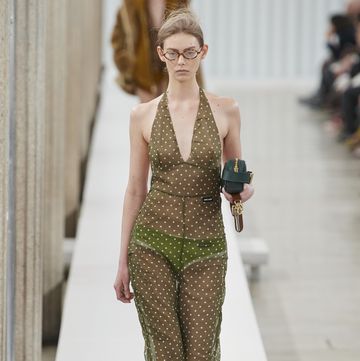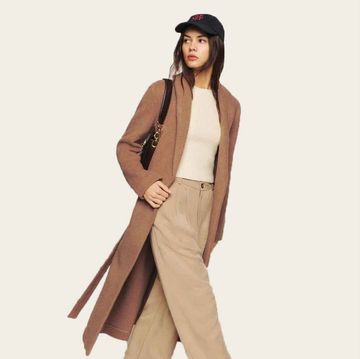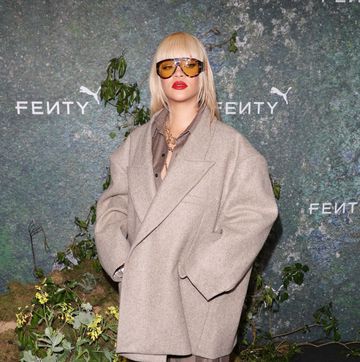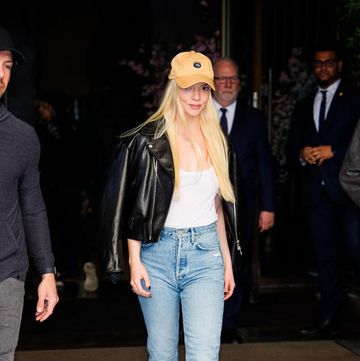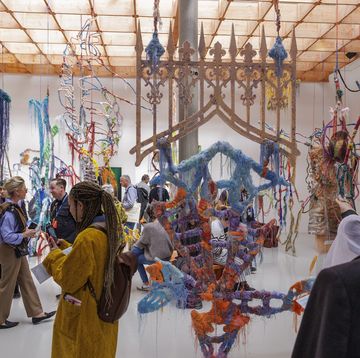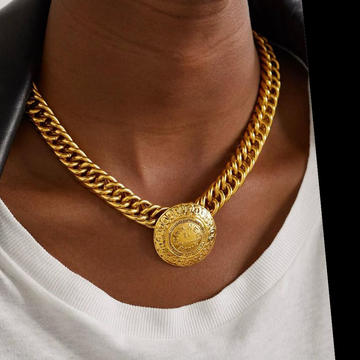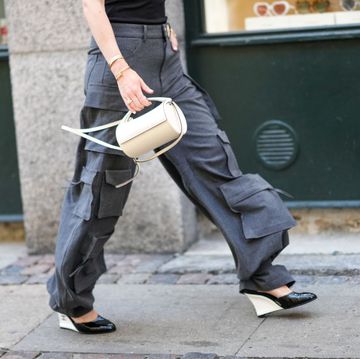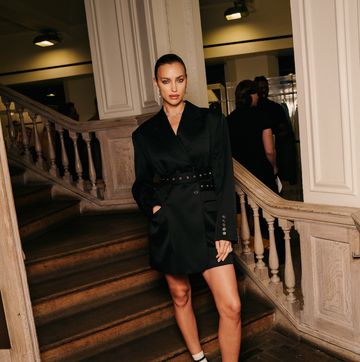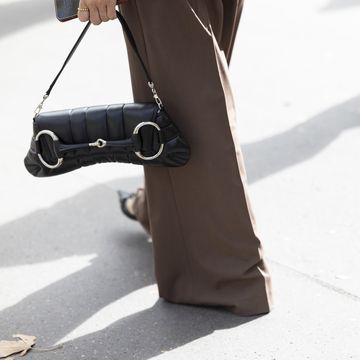Photo: Getty Images
Words: Myla Dalbesio
"They were fully-formed women, fully-formed personalities, and they were powerful. And I think, at some point, people got scared of that power. Especially their economic power."
I am talking with casting director Julia Samersova about the evolution of the fashion industry. It's a cloudy Friday morning, and we are hanging out at her kitchen table. Her one year-old twins are babbling from their bedroom, where they were just put down for a nap, and Julia is dancing her own version of the working mother tango, jumping from capping Crayolas to answering emails, offering to make me avocado toast while she explains the logistics of working with multinational corporations. Julia, a no-nonsense native New Yorker who's been working in the fashion industry for over 20 years, is tough and tender, as comfortable kissing a scraped knee as she is ripping someone a new asshole. She started out as a model agent and scout, then began working as a casting director, and now owns and operates her own casting agency, Cast Inc., where she regularly works with clients ranging from Old Navy to Italian Vogue.
"My obsession with fashion started in the late '80s, early '90s, as a kid watching the supermodel movement. Linda, Naomi, Cindy Crawford. These women were older, they were glamorous, they were not emaciated. They had women's bodies. They were still a decent size four or six. They had presence and were aspirational. They were real women, not little girls, and they were sexual, you know, they looked like they had their periods already. And at that time, they were commanding the craziest money. We all know Linda Evangelista's famous quote, 'I won't get out of bed for anything less than $10,000.'"
Yes, we all know the story she is telling me. The '80s and early '90s were the age of the supermodel, before things flipped and the waify, "heroin-chic" look was ushered in. But I had never thought about it in these terms. Broken down to the basics, what Julia is theorizing to me is that the supermodels of the '80s became too powerful, and people were scared of women who held so much control. So, they traded them in for the opposite.
"All of a sudden models were being photographed on the floor, all drugged up, and the opposite of powerful. They became little girls. Then we had this huge Eastern European moment, where we were really brought very young girls. They were children that all looked alike and became disposable. Bland, emotionless, powerless, they became interchangeable. And once you become an interchangeable commodity in the industry, you're not worth anything. So again, the power lies in the client and not with the talent. And today? I'm not really sure where we are today."
This is something I've been thinking about myself lately. If someone asked me what was going on in fashion right now, what is the modeling trend in this moment, I would say that we are in a time when shifts in diversity are the focus. Look at my girl Ashley Graham's curves in this year's Sports Illustrated swimsuit issue, Zac Posen's beautifully diverse F/W 2015 showing, Candice Huffine's much discussed appearance in the Pirelli calendar. But, as Julia has observed from her unique position as a de facto liaison between the hopefulness of models and and brutal reality of what brands are willing to do, we still have so far to go. "There's all this talk of using diverse models, and I think it's on everyone's mind, but I don't know if there's a follow through. I think people are scared, and the industry is a bunch of sheep, so people are waiting to see how it plays out before they put their money into it. That process takes a long time. People are pussies!"
Fashion week seems like a particularly difficult nut to crack. "I'm still casting shows, and no one asks me for plus size girls or even thinks about them. And the excuse across the board is that the sample size is what it is. But there has to be a way to not make size zero the sample size. There has to be a way around it. And even with ethnicity, it still feels like people are casting with the mentality of 'Oh, I already have two black girls in the show. And an Asian. Why are you still showing me African-American and Asian girls?'" Julia scoffs and shakes her head in disgust. "Uh, because I don't cast that way in my brain? Because in my brain I say, 'These are the beautiful women that I love, that make sense for this client.' I'm not counting, two black girls, one Asian, one Hispanic. But that's still going on. There's still this tokenism, and I think with size that happens too."
So, who really holds the power right now? If I can step outside of myself and the issue that I am invested in (body diversity, duh!), I can recognize that truly, this moment in fashion (and perhaps the world) is defined by social media. As Vogue said in its September issue of last year, it is the age of the "Insta-girls." Out of a series of meetings and interviews I did last week, every single person I spoke with (photographers, casting directors, modeling agents, and clients) said the number one thing clients are asking about when casting a model these days is her social media numbers. They are listed in production notes, in casting packages, and even on call sheets. When you sign into castings these days (there are usually numbered sign-in sheets at large castings, so they can call girls in the order they came in), next to the columns for NAME and AGENCY, there is another column. INSTAGRAM/TWITTER. And it makes sense, clients want to work with people who have a built-in audience.
This puts consumers in an interesting position. Consumers are the people that comprise that audience, that make up those hundreds of thousands of followers, and for the first time, they are able to vote with more that just their wallet. Now, you can vote with your phone. A modeling agent spoke to me frankly, putting concrete numbers into place. "10 thousand [followers] is a drop in the bucket," he said. "At 100 thousand you become a contender. 500 thousand means you're really in the game. At one million, that's when people will really start to take you seriously." This also means that outside of supporting traditionally beautiful models like Gigi Hadid and Kendall Jenner (arguably the most famous products of the social media machine), the social media community can make stars out of a more diverse cast of beauties. Take Tess Holliday as an example. A 5'5" tall, size 22 fashion blogger and body activist, she started the wildly popular #effyourbodystandards hashtag, and parlayed her 600k+ followers into a contract with Milk Model Management, becoming the first woman of her size to sign to a major agency.
I am always trying to figure out the concrete steps we can take to make change happen. Like Julia said, we talk about it a lot, but what specific actions can we take to move things along? And how can the average female consumer, frustrated with the images she is presented with, feel like she is doing something that will actually make a difference? So far, this is what I have figured out. Of course, money talks the loudest. The bottom line is king, so support the brands that are presenting you with the images you want to see. If you have a problem with a brand's advertising, don't shop there. And if you feel like that limits your options, you know what? The Internet is wide and wonderful, and I can guarantee you that you will find exactly what you need if you do a little Googling.
And, speaking of the wide and wonderful Internet, get active on it. Follow the models and personalities you like on all platforms. Get your friends to follow them (tagging people in comments is a great way to get this moving). Start new hashtags! Incorporate the people you want to see more of into your new hashtags. And, keep the conversation going. Tweet at brands. If you do it enough, or get enough people to join you, someone will notice. And if it's not the brand that first takes notice, a member of the press will. And once press picks up on a story, the brand will have to take notice. It's the Insta Age, and you're a part of it. You have power, you have a voice, and you have a platform on which you can use it. So use it. Take the power back from the brands and give it to the girls you want to see in front of the lens. Let's make a new Naomi, and let's make her someone that you feel represents you or what you want to see.
From the editors of elle.com
Read more about writer, artist and model Myla Dalbesio here.


